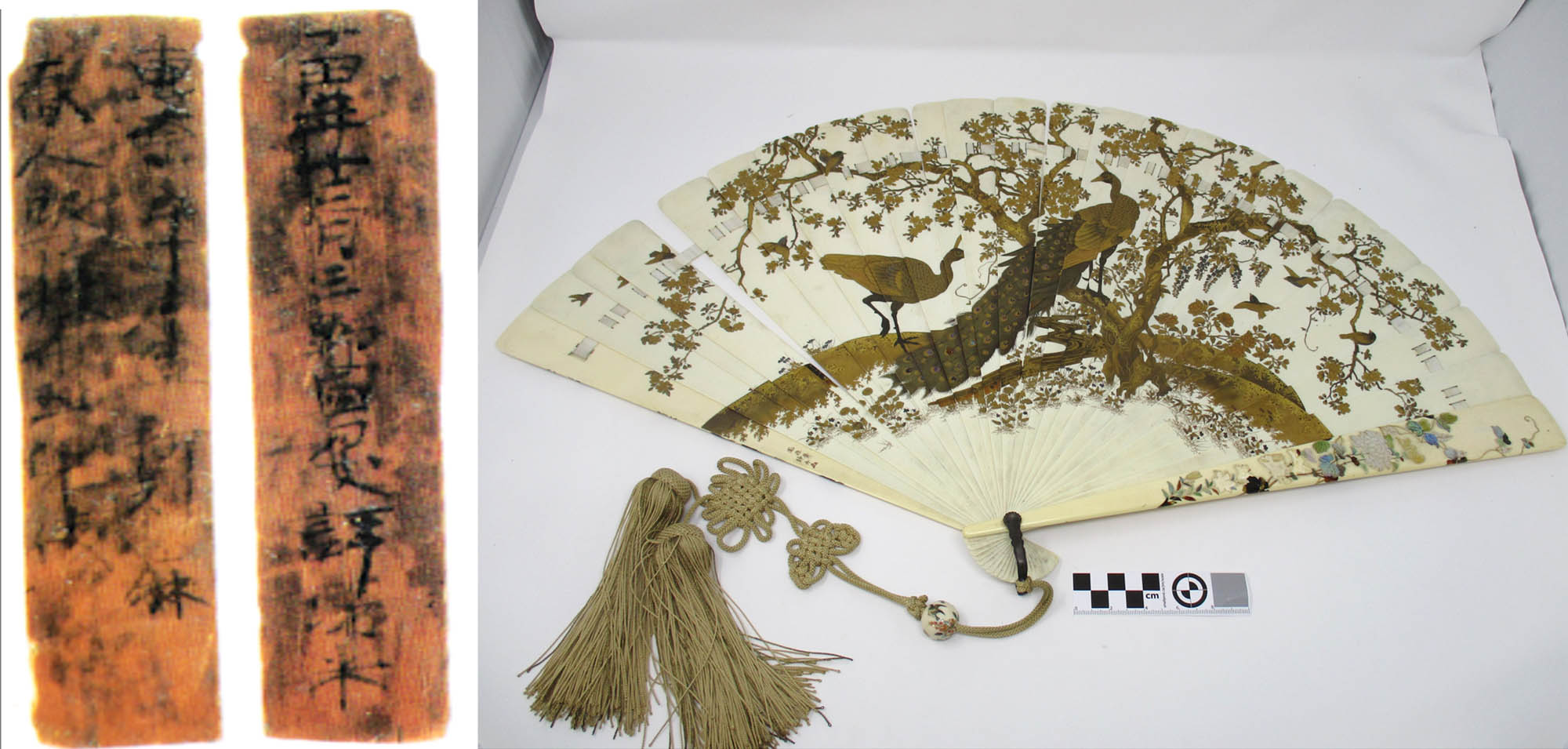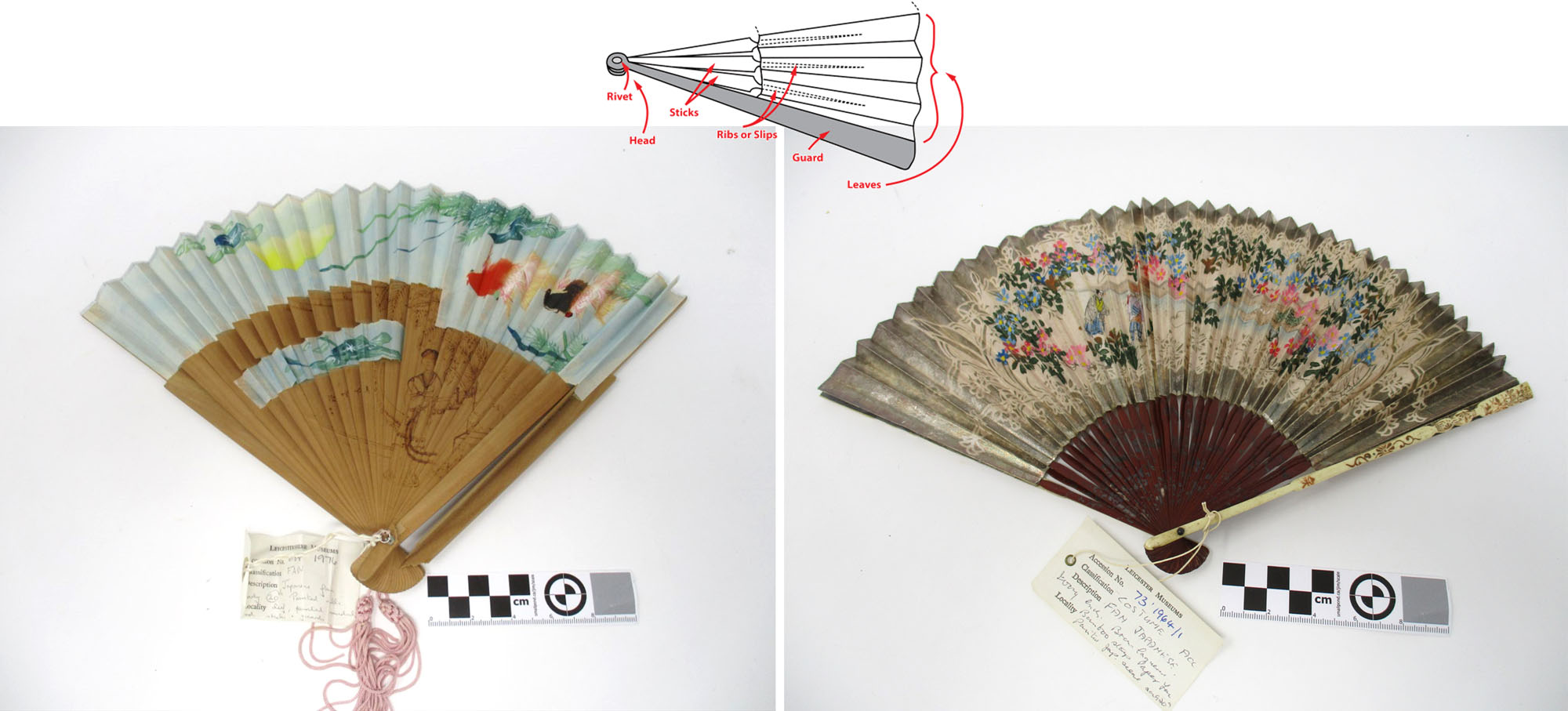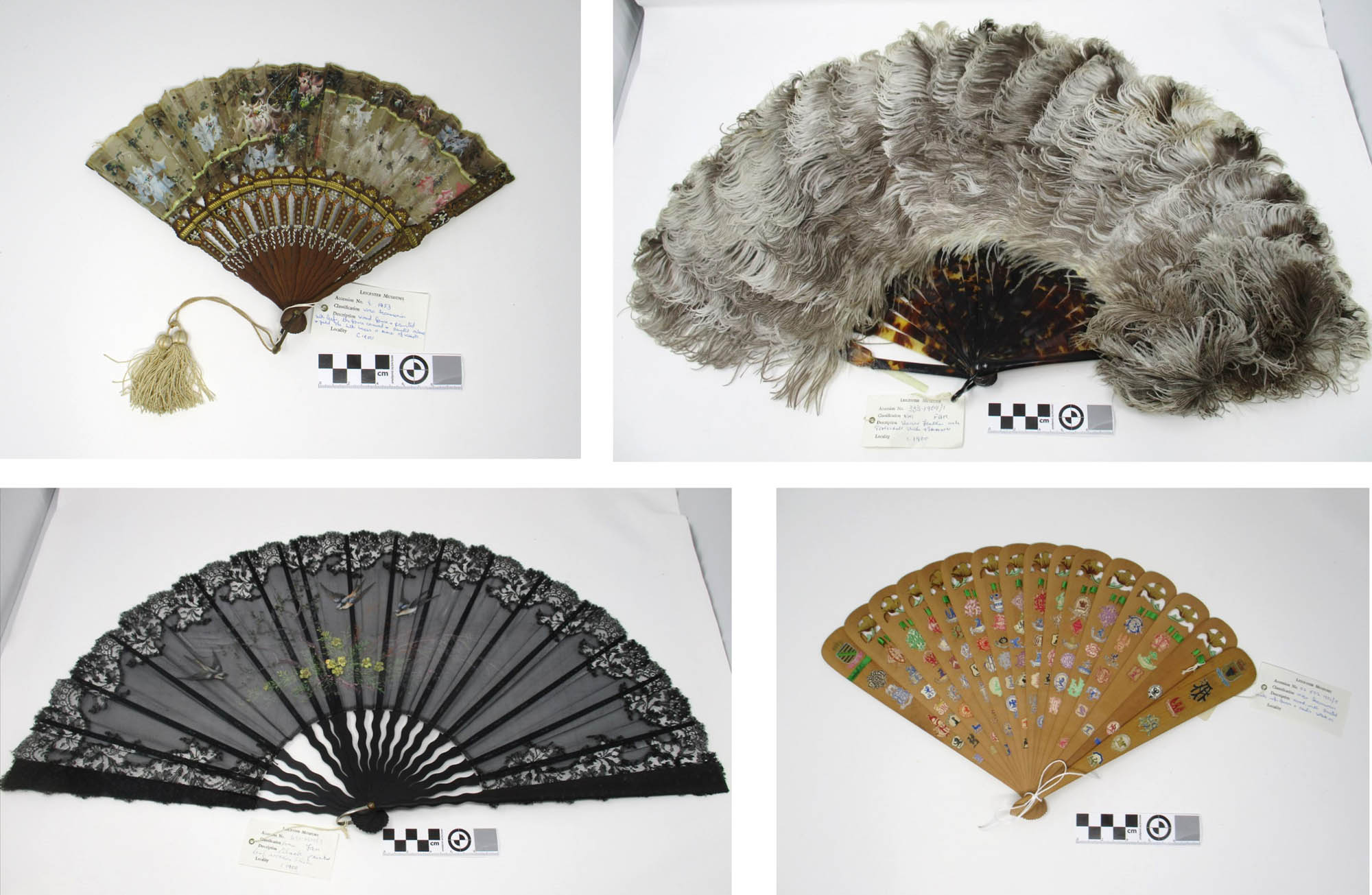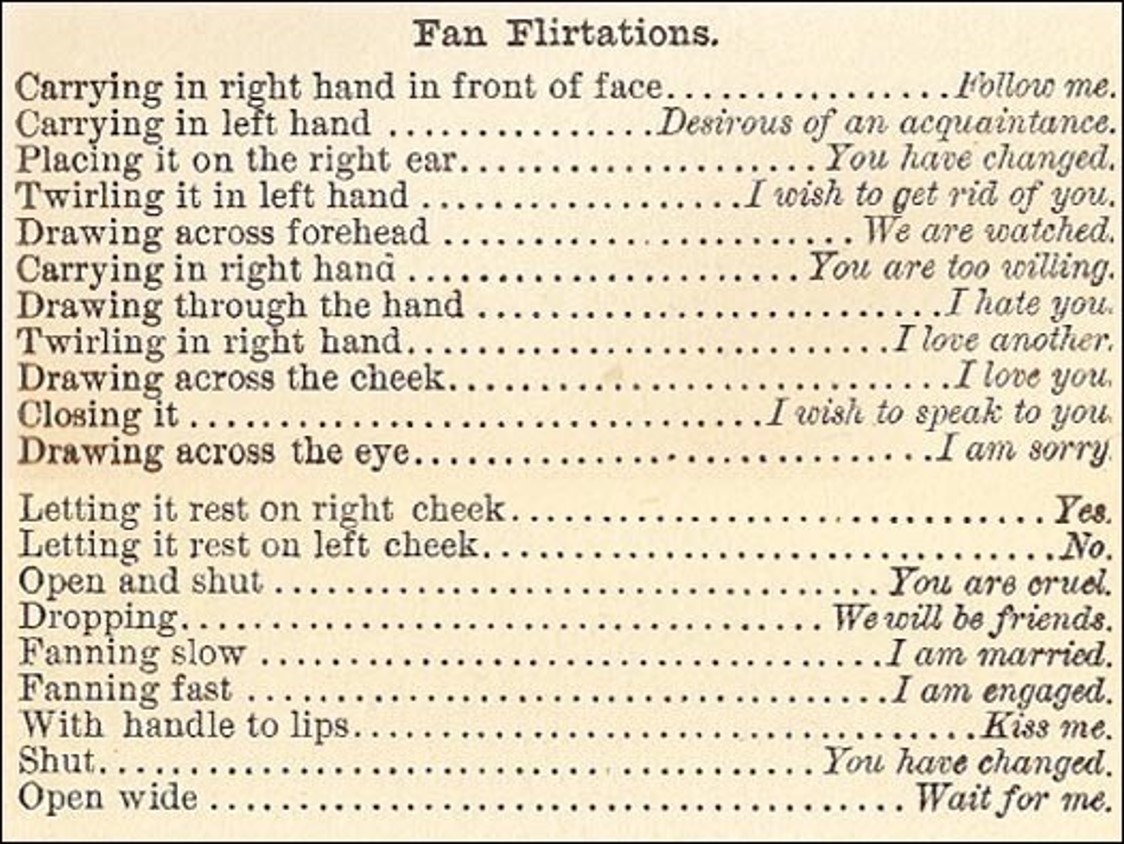Folded Hand Fans: An International Cultural Icon
The fascinating history behind the Japanese and European folded hand fans held in the Museum's Collection.
Published: 18 December 2023
The Origin Story
Folded hand fans originated in Japan probably during the 8th century. They are known by the Japanese as Ogi and have additional names for their variations. The idea of the folding fan was thought to have originated from mokkan; thin wooden tablets used for recording information. One sometimes had to carry many of these around, so for convenience these were held together using a rivet. This created a pivot around which the sticks could unfold, and from that the folding fan was born. Intricate designs were added on to these sticks and they became the first variation of the folded fan known as Hiogi.

Two mokkan tablets and Japanese Hiogi style folded fan
Hiogi evolved into the hand fans we are most familiar with today; typically made from sticks that extend out as ribs to which the leaves of folded material are attached.

Image: Top - the anatomy of the folded hand fan.
Bottom - examples of Japanese folded fans from 20th Century with sticks made from wood (left) and sticks made of bamboo with leaves of paper (right, date unknown).
Hand fans were enjoyed by the wealthy as a fashion accessory. They were also given as gifts to high-ranking members of society. Additionally, they were used as a creative outlet to convey poetry and by artists to show off their illustrations along with many other uses.
Arrival to Europe
Trade between East Asia and Portugal around the 16th century introduced folded hand fans to Europe. This device gained initial widespread popularity in Spain, being used by flamenco dancers during performances. By the 17th century they became a well-established part of European culture, with France being the centre of production of these accessories. Fans in Europe were predominantly used as a symbol of wealth, with many portraits of the era depicting this item in the hands of aristocrats.
European fans typically have sticks made of wood or ivory, whilst the leaves of the fan were made from many different materials such as lace, silk or feathers. There were also Brisé fans only made with sticks (like the Japanese Hiogi fan).

Image: European hand fans from 20th Century.
Top left – sticks of wood with painted silk leaves. Top right – sticks of tortoiseshell with leaves of feather.
Bottom left – wooden sticks with leaves with lace trimmings. Bottom right – Brisé style fan with coat of arms design.
As a consequence of the French Revolution in the 18th century, fans lost popularity amongst the wealthy. Cheaper alternatives were being crafted and sold as there was a scarcity of the costly materials fans were made from. This increased the accessibility of this accessory meaning the average person could afford to look rich, causing the fan to lose the air of luxury it once had.
Duvelleroy, a Paris based fan making company, were determined to restore the cultural role the fan played. To promote their London based store, Jules Duvelleroy published ‘The Language of Fans’. The formal publishing of these rules brought a newfound intrigue to hand fans, reintroducing them as an important cultural accessory particularly amongst the upper class.

An example of fan language from a Victorian Magazine, 1866
Fans were made with the intention of serving a practical purpose – to cool oneself down. The invention of folded hand fans in Japan helped transform this device into a symbol of cultural significance which has served as a marker of wealth and a medium for creative expression across the world.
